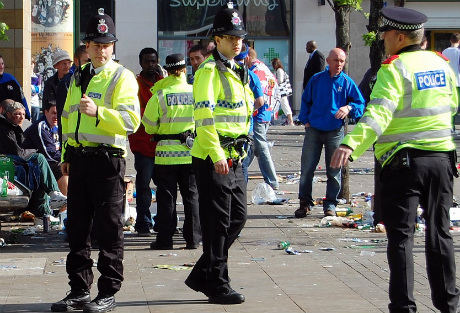Commercial Insights

A new study by the Home Office has revealed that large-scale stop-and-search operations by the police has no visible effect in reducing crime.
The study was released on the back of The Guardian submitting a Freedom of Information, and it has been noted that it’s findings are directly relevant to the verbal debate between the Theresa May, Home Secretary, and the Commissioner of the Metropolitan Police over whether falls in large scale stop and search can be linked to a recent rise in knife crime.
The answer, according to the study, is a resounding no. It took into account ten London Boroughs which had seen a 300% increase in police searches for weapons on the person of suspects, which went up from 35,000 in 2007 to 120,000 in 2008 – the first year of Operation Blunt 2.
It compared the crime rates in these boroughs to 16 boroughs in which there had not been such a large increase – a mere 50% - in weapon searches, over the same time frame; looking at nine separate measures of recorded crime including knife-based assaults, robbery, and weapons offences.
However, such analysis resulted in “no statistically significant crime-reducing effect from the large increase in weapon searches during the course of Operation Blunt 2. This suggests that the greater use of weapons searches was not effective at the borough level for reducing crime.”
London Ambulance data over the same period backs up the findings, as their callouts for weapons related injuries was not reduced in the areas where mass stop and searches were increased. Rather, it was in the areas where stop and search was rolled out in smaller increases that ambulance calls actually fell faster.
The study concludes on the note that whilst stabbing murder rates through both types of borough were reduced in the period of increased stop and searches, the minute numbers of data involved mean that it is extremely unlikely that these falls had anything to do with Operation Blunt 2.
It states that: “overall, analysis shows that there was no discernible crime-reducing effects from a large surge in stop and search activity at the borough level during the operation. However, it does not necessarily follow that stop and search activity does not reduce crime.”
The findings will be welcomed by the Home Secretary, Theresa May, who publicly clashed with the Met Commissioner when she rejected his claims that increases in knife crime were due to a reduced amount of stop and search in London boroughs.
May is understood to have been behind a major campaign to reduce the amount of stop and searches on London streets after it became apparent that black people were more than four times more likely to be stopped and searched by police than their white counterparts. May has stated that she feels the practice is poisonous to community relations.
A spokesperson for the Home Office was quoted as saying that: ““The government is clear that the power of stop and search, when used correctly, is vital in the fight against crime. However, when it is misused, stop and search is counterproductive and a waste of police time. Stop and search must be applied fairly, effectively and in a way that builds community confidence rather than undermining it.”
It was added that whilst the study based its figures on the early period of 2007 and 2008, there had been measures introduced in 2014 to improve the effectiveness of stop and search, especially in increasing transparency, equality and accountability in its deployment.
Academy tools to help you get a job
-

Free Watson Glaser Practice Test
Understand the test format, compare your performance with others, and boost your critical thinking skills.

